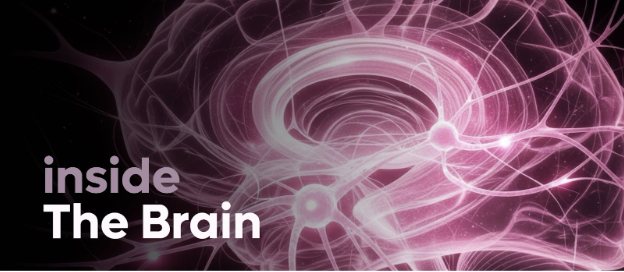
Inside The Brain: How Autonomous Intelligence Actually Works
September 23, 2025
Your company's best strategic thinking exists in documents, methodologies, and executive experience. The Brain makes this intelligence instantly accessible to everyone who needs it. Instead of AI that sounds generic, you get responses that reflect your actual strategy, voice, and competitive positioning.
The Brain functions as your company's cognitive infrastructure. It deploys autonomous agents that understand your organizational knowledge and can reason with complex strategic information. Your teams get intelligent responses without the usual prompt engineering or constant oversight.
The Foundation: Beyond Standard RAG
While RAG (Retrieval-Augmented Generation) has become the go-to technology for steering AI away from hallucinations and making it sharper, standard approaches have clear limits. RAG works by storing documents as vector embeddings and retrieving similar content when prompted. This handles basic Q&A well but struggles with strategic work that requires understanding context, relationships, and organizational nuance.
You know that nagging feeling when AI outputs sound "almost right" but miss your company's actual strategic reasoning? That's the semantic complexity gap standard RAG can't bridge.
The Brain uses what we call Agentic Graph RAG — a hybrid architecture that combines vector storage for fast retrieval with graph databases for semantic reasoning. More importantly, it deploys autonomous agents that process and structure your information intelligently, then retrieve contextually appropriate responses when your teams need them.
Technical Architecture: Agents All the Way Down
The Agent Army: Storage and Retrieval
Storage Agents continuously review, organize, and store information in your database. These agents:
- Automatically detect document types (strategy docs, tone guides, messaging frameworks)
- When relevant, extract entities and relationships using LLM intelligence, suggesting the nodes and edges that you can configure 100% through natural language
- Structure information into vector storage (for instructions) and graph storage (for complex knowledge) with minimal human oversight — low-touch by design
Retrieval Agents activate whenever someone in your company needs information. Rather than simple keyword matching, these agents:
- Work through Claude as an interface to understand context and intent behind requests
- Navigate relationship networks in the graph database
- Combine multiple information sources intelligently
- Apply your organizational tone and methodology automatically
MCP: The Universal AI Connection Standard
The Brain connects to any AI system through MCP (Model Control Protocol) — the emerging standard for AI tool connectivity. This means:
AI Agnostic Architecture: In principle, The Brain works with any LLM that supports MCP connections. Your strategic intelligence isn't locked into one AI provider.
Claude Recommendation: While technically agnostic, we strongly recommend Claude as your front-end. Here's what I've seen work in practice: most LLMs aren't optimized for handling semantically complex organizational reasoning. Claude excels at nuanced strategic work and seamless MCP integration. (We'll explore this in depth in our upcoming "Why Claude" analysis.)
Hybrid Storage: Vector + Graph Intelligence
Vector Storage (Pinecone): Handles AI instructions — tone rules, format templates, style guidelines. This information is relatively static and benefits from fast semantic retrieval.
Graph Storage (Neo4j): Manages semantically complex knowledge — strategic relationships, evolving messaging, competitive positioning. Graph structures capture the nuanced connections that drive strategic decision-making.
The Insight: Different information types require different storage approaches. Instructions work great from vector databases, but strategic knowledge needs graph reasoning to maintain context and relationships.
Why This Matters: From Retrieval to Reasoning
Standard RAG systems are sophisticated databases. The Brain is autonomous intelligence.
Traditional approach: Human asks question → System retrieves similar content and makes a summary → Human interprets and applies
The Brain approach: Human describes need → Agents reason through organizational knowledge, iteratively until it can deliver on the task → System delivers contextually appropriate, strategically aligned output
Your teams get responses that reflect your company's actual strategic thinking, not generic AI training. Marketing receives messaging that aligns with your positioning. Sales gets talking points that match your methodology. Leadership communications maintain your established voice.
Implementation reality: If your team can use Claude, they can access your organizational brain. We handle the technical setup — typically operational within a week. Your people keep working the way they're comfortable, they just get smarter results.
The Compound Advantage
Companies with autonomous organizational intelligence simply move faster. Manual coordination across teams and channels creates bottlenecks. Consistent strategic alignment happens automatically when your intelligence systems work at software speed.
Your strategic intelligence, scaled systematically. Sharp thinking, instantly accessible.


